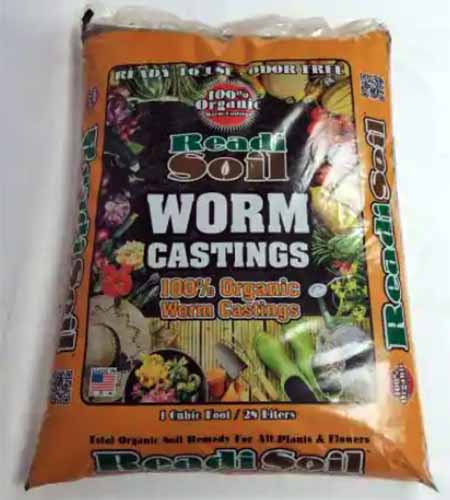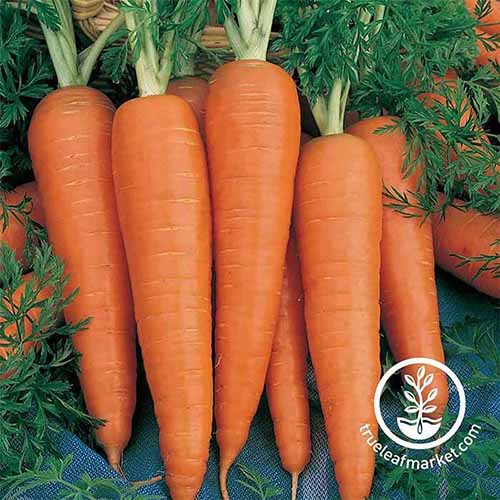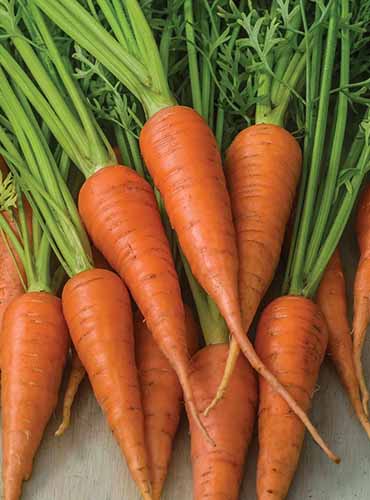Troubleshooting and Preventing Carrot Growing Problems
Last spring, I dutifully watered my carrots and got overly excited as the seeds began to germinate.
The tops grew to an impressive size and looked picture perfect. Everything seemed to be going well – until I pulled them up and found only teeny-tiny roots.
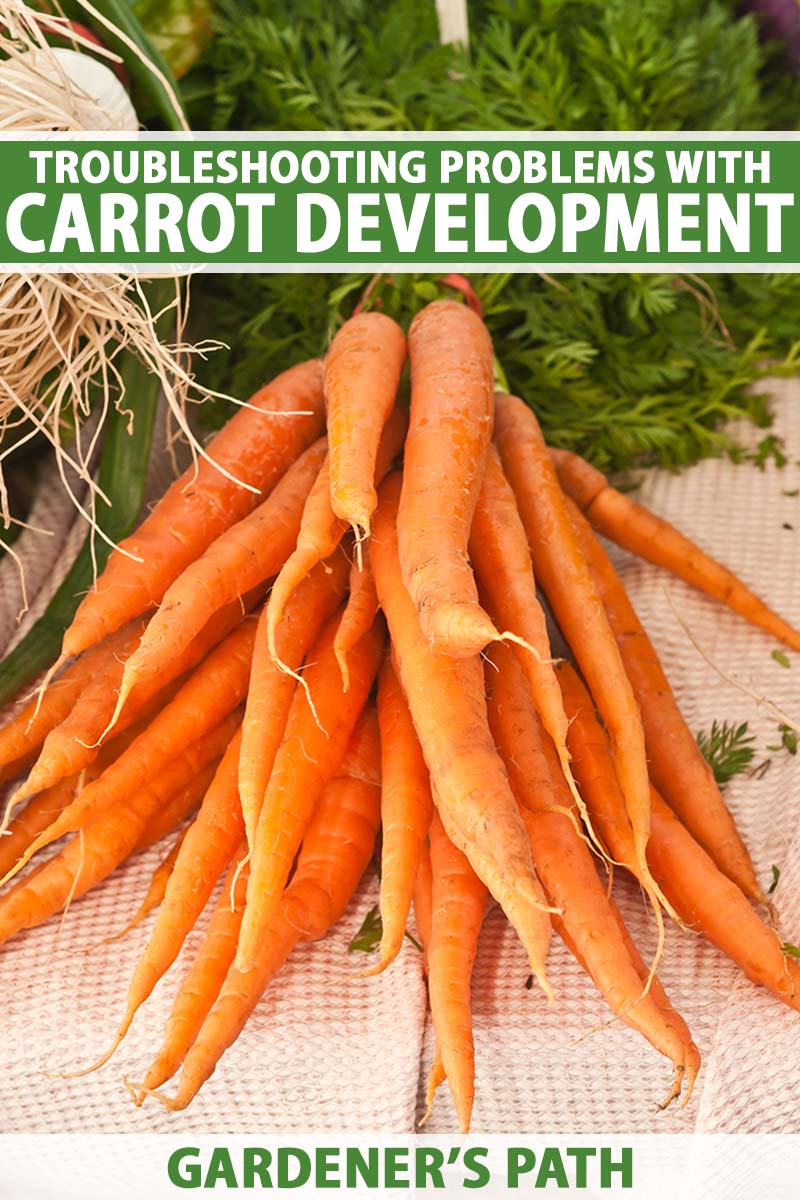

We link to vendors to help you find relevant products. If you buy from one of our links, we may earn a commission.
While I still cooked and enjoyed them, I was disappointed by the lack of development.
It turns out the culprit was my soil. I lived in an area with heavy, clay soil which is the primary reason the roots didn’t form.
There are plenty of other reasons carrots might not form healthy roots, including improper temperature and mismanaging moisture.
In this guide you’ll learn how to help your plants develop full-sized, delicious roots and troubleshoot problems.
Troubleshooting Carrot Root Development
Unfortunately, once you pull up a carrot, you can’t put it back in the ground and expect it to improve.
So, you can’t fix bad root development after you’ve harvested your crop. But you can learn from your mistakes and improve next year’s harvest!
Keeping a gardening journal is an especially good way to note what worked, and to remember things you want to change between growing seasons.


Having a journal and keeping track of maturity times also helps you know when to harvest.
The seed packet should provide a lot of information on when the roots should be ready, depending on your selected cultivar. If you pick your plants too early they won’t be fully developed.
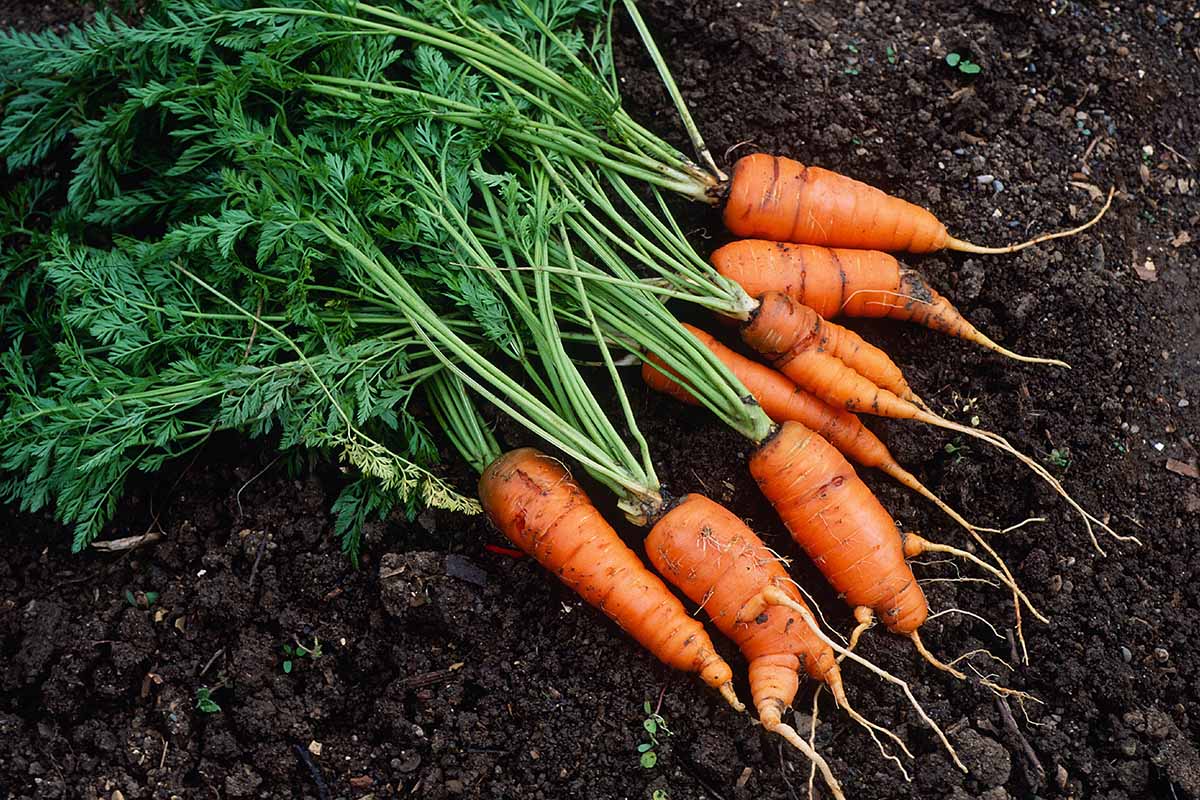

The main reason these root veggies don’t form is heavy or clay soil. The tight soil structure doesn’t allow roots to form properly.
The easiest way to fix this particular problem is to amend the growing medium with something like compost or sand. But there are many other reasons they might not develop.
Let’s take a closer look at some common causes and solutions, starting with the most common culprit – heavy soil.
Start with the Soil
Rocky or clay soil is likely to cause root development issues. Fortunately, this is fairly easy to fix by adding amendments and prepping the planting area properly.
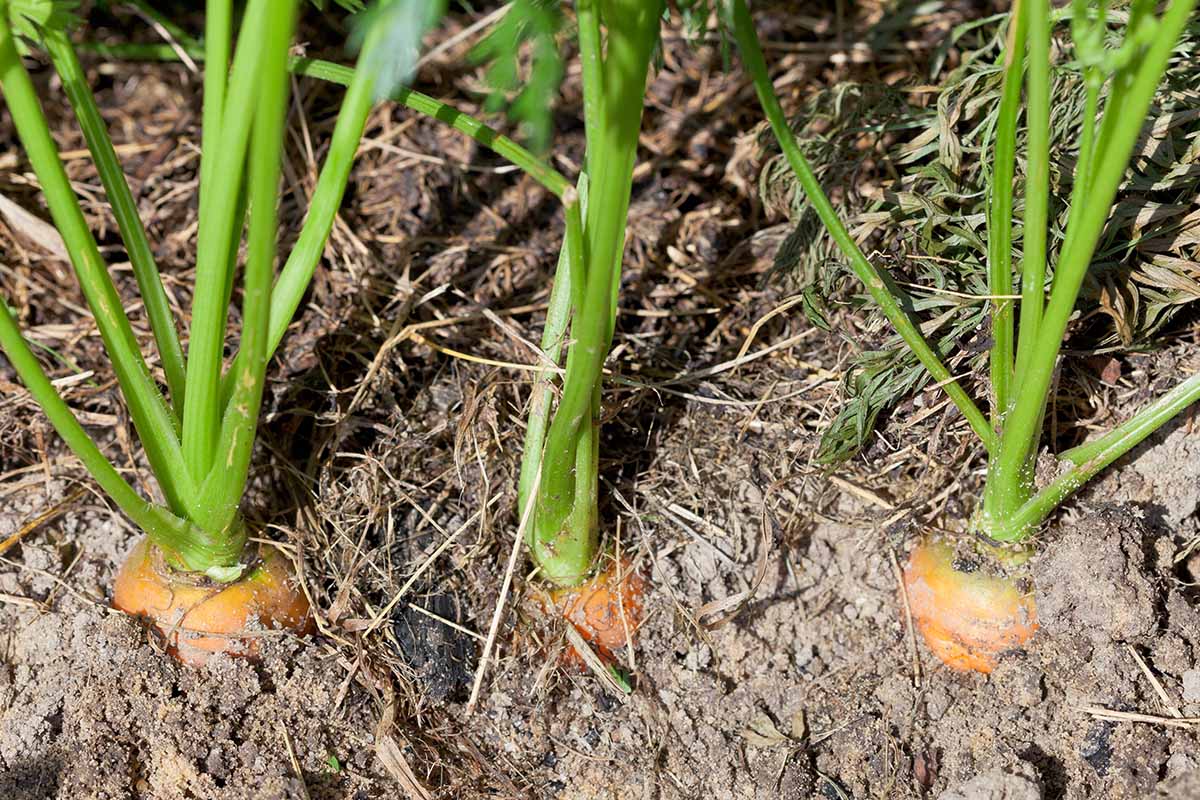

Before planting these sensitive vegetables, have a soil test done. These veggies are particular about the texture and composition of the medium they are planted in, as well as the nutrient content. And they require a mildly acidic to neutral pH of 5.8 to 7.0.
The best way to improve heavy soil is to amend it with organic matter. Compost is the most common option for creating soil with a more loamy texture. You can also use store bought amendments like sand and worm castings.
You can find organic worm castings from ReadiSoil at Home Depot in 22-pound bags.
I like adding worm castings to my clay soil because it doesn’t take much effort on my part, and improves both the texture and nutrient content of my planting area.
Rocky soil can lead to misshapen, deformed roots so be sure to dig the planting area and remove any stones before sowing. Cultivate the growing medium to at least 12 inches deep, and amend as needed according to the results of your soil test.
Some people plant carrots hoping their roots will break up the soil. Unfortunately they are pretty fragile and the plants are more likely to fail to develop, or the roots might twist.
If you want to use a root vegetable to break up or aerate your soil, daikon radishes are a better option.
You can find daikon radish seeds available in a variety of packet sizes from True Leaf Market.
Cultivar Selection
If you are having problems with carrot development this season, or to prevent problems with the next crop that you plant, choose varieties that are easygoing about soil conditions.
Chantenay Red Core
It’s probably no surprise that ‘Chantenay Red Core’ get their name from their vibrant red centers. Because of their color and sweet taste they are particularly good for eating raw or juicing.
While not as suited to growing in heavy soil as some varieties, they only grow to around five to seven inches long, so they need less loose topsoil. They take 65 to 70 days to mature.
You can find seeds for this variety at True Leaf Market.
Learn more about growing ‘Chantenay’ carrots in our guide.
Danvers
‘Danvers’ is my favorite variety of carrot since it is one of the most easygoing options.
Short and blocky, this cultivar is suitable for growing in containers and needs less than a foot of loose growing medium to grow in.
Check out our detailed guide on growing this heavy soil hero.
‘Danvers’ is ready to harvest in 65 to 70 days. Seeds are available from True Leaf Market.
Short ‘N Sweet
This cultivar is a Nantes type with a name that says it all – these truly are short and sweet. They only grow to be around around four inches long at maturity and take 68 days to mature.
Their short length makes them suitable for containers and for gardens with a limited amount of loose topsoil.
You can find seeds for this small variety available at Burpee.
Learn more about 13 of the best varieties to grow at home.
Germination
Even seasoned gardeners sometimes have trouble coaxing carrot seeds to sprout. The seeds must be constantly moist until they germinate, but if you make the medium too soggy, they might rot.
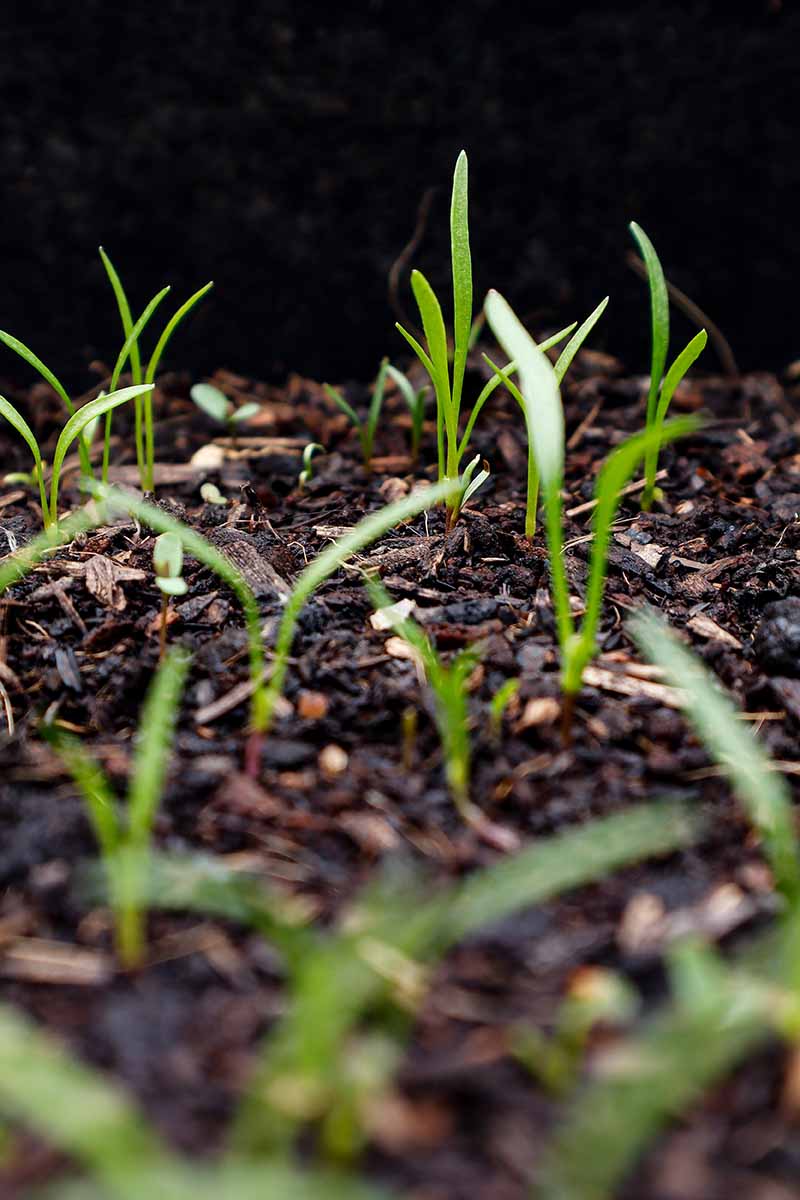

Don’t let the soil crust over, since that can also hinder germination and development.
Another problem that might inhibit germination is planting seeds too deep. In general, they should be covered only by about a quarter of an inch of soil.
Remember to gently water the seeds immediately after they are planted. This helps the seeds settle in and gets germination started.
In most cases they will need water every day for 21 days, since they take about that long to germinate.
Monitoring Moisture
Carrots are extremely sensitive to water levels as they continue to grow as well. Too much moisture can cause carrots to crack while a lack of moisture can stunt development, especially while the plants are young.
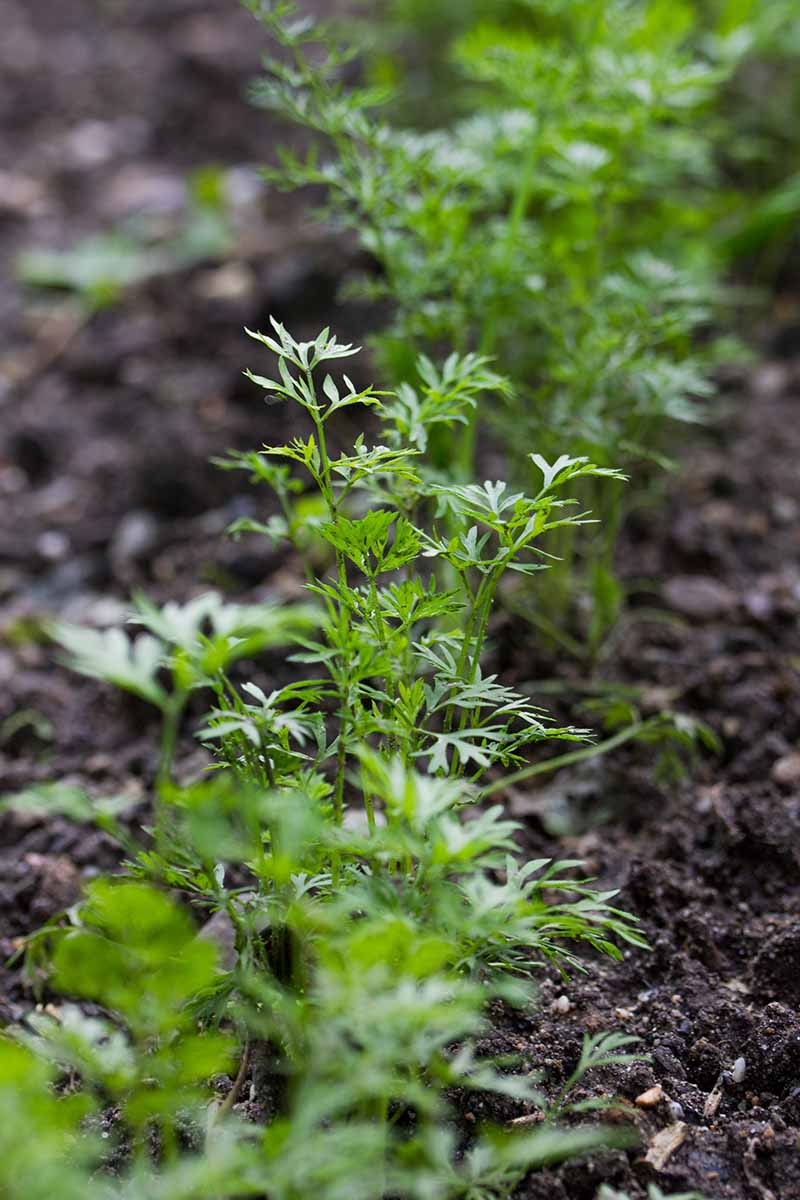

When growing carrots, it is a good idea to use a rain gauge or moisture meter.
Both are affordable, easy to use, and make a world of difference when it comes to growing healthy roots, helping you to determine the amount of precipitation your garden has received and the level of moisture in the soil.
For the average gardener, the Hydrofarm Active Air 3-Way Meter is a good option because it is affordable and easy to use.
Hydrofarm Active Air 3-Way Meter
Plus, it doesn’t just measure water, it can also detect pH and light levels. Check it out at Arbico Organics.
It’s probably no surprise that carrots are sensitive to nutrient levels. Let’s take a closer look at what problems might arise with nitrogen next.
Nutrient Needs
High levels of nitrogen can promote shoot and foliage growth at the expense of root growth.
It’s common among beginning gardeners to believe plants will grow better if they’re given more nutrients. But that is only true to a point, and carrots are particularly sensitive.


This is difficult because many composts and fertilizers, like fresh cow manure, contain high levels of nitrogen. You can still add compost to your garden, it just needs to be aged, well-rotted, or otherwise broken down.
Try to select fertilizers with lower levels of nitrogen (N) and higher levels of phosphorus (P) and potassium (K). See our guide to the best fertilizer for common garden vegetables for recommendations.
Problems with development from a lack of nutrients are likely related to a lack of accessible potassium or phosphorus, since they aid in root growth.
You can work bone meal into your soil to help increase phosphorus levels. Potash or wood ash are often used to add potassium.
Get to the Root of Things
When carrots fail to develop, clay or rocky soil is often at the root of the problem. But they may also fail to grow properly due to problems with germination, moisture, or nutrients.
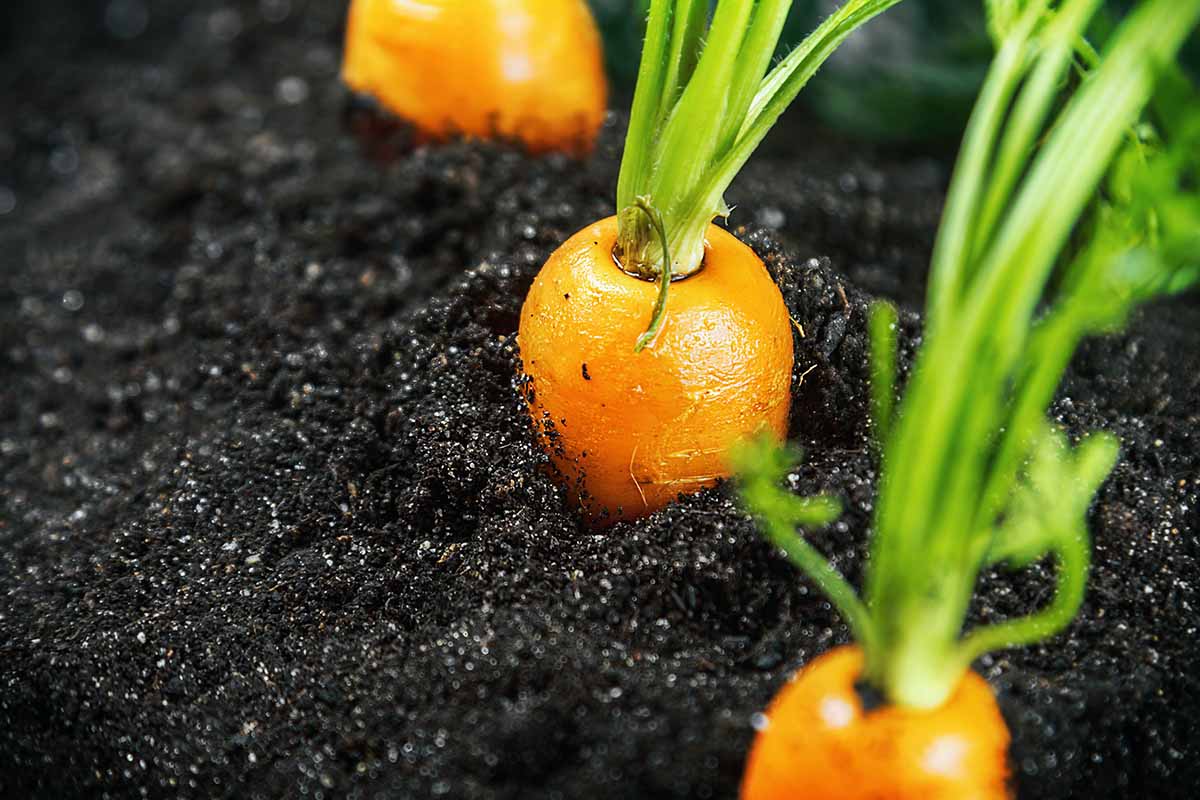

While you might not realize your crop is underdeveloped or stunted until it’s too late, you can plant robust varieties with better tolerance for adverse soil conditions in the future, and remember to improve conditions in the planting area to the best of your ability to get a better harvest next year.
Are you growing carrots? Do you have any tips to share? Let us know in the comments section below!
If you are looking to master growing carrots in your garden, check out these helpful guides next:

